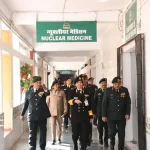In a significant step toward boosting India’s indigenous unmanned aerial capabilities, the Defence Research and Development Organisation (DRDO) is preparing to begin flight trials for the Medium Altitude Long Endurance (MALE) UAV programme within the next six months. The initiative marks a crucial milestone in India’s journey toward self-reliance in advanced drone technologies.
The upcoming trials, jointly conducted by DRDO and select private sector partners, aim to achieve deployment readiness in record time, aligning with the Ministry of Defence’s focus on accelerated defence acquisitions under the “Make in India” initiative.
According to official procurement sources, the tender for 87 MALE-class UAVs will follow a split-order model, with 64 percent of the order awarded to the L1 bidder and the remaining 36 percent to the L2 bidder. This approach is designed to encourage healthy competition, ensure timely deliveries, and balance industrial participation — a model recently seen in several large-scale Indian defence contracts.
The MALE UAVs under development are expected to feature advanced Intelligence, Surveillance, and Reconnaissance (ISR) payloads, satellite communication links, and endurance exceeding 24 hours. These systems are being tailored for persistent operations across diverse terrains — from high-altitude border regions to maritime zones — enhancing India’s all-weather surveillance capabilities.
The forthcoming trials will focus on evaluating platform stability, flight endurance, mission automation, and payload integration, ensuring the UAVs meet operational standards required by the Indian Army, Navy, and Air Force.
Defence experts note that, if successful, production contracts could be finalised by late 2026, paving the way for large-scale induction into the tri-services by 2027.
The initiative forms part of India’s broader national strategy to reduce dependence on imported UAVs and establish a robust domestic ecosystem for unmanned systems development. It also reinforces India’s growing commitment to technological autonomy, joint industry participation, and next-generation surveillance readiness in an evolving regional security environment.













